LunarMeteoriteHunter
Latest Worldwide Meteor/Meteorite News
Sun, 01 Aug 2010 00:43 EDT
There was a significant fireball over eastern New Mexico this morning
that "turned night into day" as the saying goes. I am still processing
the data but here is a preliminary movie with the audio of the radio
head echo. The full radio reflection was over three minutes duration.
(Of possible significance is the subtle "whizz" or whistle sound
initially which may be direct meteor emission rather than forward
scatter reflection.)
It is also possible this meteor was an SDA or alpha Cap or may trace
back generally to that radiant region. Not sure about that though due to
cloud.
I do not know what the magnitude of the meteor was but the Moon
is fully evident in the frame. If anyone has magnitude estimates I
would appreciate hearing from you. Thank you.
Comments:
Anonymous said...
I was driving from San Angelo, TX towards NM somewhere between
530-6AM Central Time when I saw a massive flash streak in front of me.
It was mostly Green and a bit of yellow in color and was very bright. It
looked like it hit off into the distance in front of me. Do you have
any info for me? It really caught my attention especially since I was on
my way to Roswell...go figure...
Loni C said...
I'm in Portales New Mexico and saw it too. I thought I was going
crazy because it was so bright, huge, and unusually long lasting so I'm
glad to see I was not losing my mind! Though it looked blue and yellow
to me it was a huge streak. I felt blessed to see such an incredible
sight.
Brian Vike
The Vike Factor (Into the Paranormal)
Sun, 01 Aug 2010 16:49 EDT
Posted: July 31, 2010
Date: July 30, 2010
Time: Evening.
Hi My name is (name removed) I'm an Azilda resident and me and my
boyfriend and 3 of our friends and a bunch of campers saw a large orange
glowing or even possibly burning object in the sky over Whitewater Park
in Azilda last night.
Strangest thing I've ever seen came close enough to look like it was
baseball size and then gradually got smaller and moved from west to
north east at a speed faster than a satellite and slower than a local
bush plane.
It was soundless and moved in a very bizarre curved like path
the whole incidence lasted for at least 45 seconds as we all got up and
followed it until it disappeared. We were all wondering what the heck it
was any insight or reports from other people would be interesting. I'm
attaching a picture I got with my crappy phone camera I adjusted the
brightness and zoomed in about 200%. Thank you.
Space Weather
Sun, 01 Aug 2010 17:30 EDT
Dawn came early to New Mexico on Saturday morning when a brilliant
meteor exploded near Santa Fe. "It turned night into day," says amateur
astronomer Thomas Ashcraft who recorded the fireball using an all-sky video camera:
The movie's soundtrack is the signal from a 61 MHz forward-scatter
meteor radar also operated by Ashcraft. Ghostly echoes from the meteor's
debris continue long after the meteor itself explodes.
Listen again.
It's
been 37 years since I've seen a UFO - and finally this evening -
Thursday, July 29, at 10:59 p.m. - I was blessed with watching something
odd in the late evening sky.
Keep in mind - a UFO is not necessarily an alien craft from a far away
galaxy or inter-dimensional travelers. It's just something flying
through the air that you cannot immediately identify.
My 17-year-old son, Joey, and myself had just stepped out our back door
onto a deck from our Scottdale, Pennsylvania home. We have a wooden ramp
that moves off of this for my wife's wheelchair. Joey was off to a
friend's house for the night and I was just seeing him out.
I stopped at the top of the ramp as he tromped down it into the back yard - and I looked up into the northeast sky.
A giant, green fireball suddenly caught my attention - and I immediately
shouted to Joey to look up. We both watched this object silently moving
in a downward motion and only lost sight of it behind our neighbor
Debbie's two-story frame home one block away.
Joey and I both agreed. It was huge. We finally agreed on it
being the size of a nickel held at arm's length. I have no idea exactly
how far away the object was. The color was definitely green - and it
seemed to be on fire. Joey recalls seeing fire spewing from behind it.
Don't ask where the photos or video are - my sighting lasted a whopping 3
seconds; so we figure Joey saw it for about 2 seconds. My $800 digital
camera and my cell phone were both lying on my office desk - on the
second floor.
I covered a similar story on March 31, 2010, Mutual UFO Network (MUFON) Case # 22579 in this report: Florida couple questions green fireball under 1,500 feet: Meteor or UFO?
While the object felt natural - I'm still curious as to exactly what it
was. So huge in the sky, I would be hard pressed to believe there are no
additional witnesses out there. I called neighbor Debbie as her husband
had just been at our home tinkering with an electrical project - but
they had been inside.
My first sighting was in 1973 at the age of 16 - a disc-shaped UFO that I
managed to get within 30 feet of. That experience ignited a lifetime of
UFO interest. I may also have seen a UFO late last year at a
Pennsylvania site I am currently investigating - Site 516 - but did not
file a report on that one. It was off in the distance several miles and I
am still not convinced it was a helicopter.
I did file a report on this object with MUFON - hoping like everyone
else - that I can find out what it was or at least talk to additional
witnesses. Mine is Case # 24841.
Well - back to other people's UFO sightings. I promise to keep watching the skies.
Update: A third witness has come forward.
The third witness - a 14-year-old neighbor of ours, said he saw the
object at the same date and time as we did from a point of view close
by. He described the object as a "frisbee on fire."
LunarMeteoriteHunter
Latest Worldwide Meteor/Meteorite News
Wed, 04 Aug 2010 15:34 EDT
On Tuesday August 3rd, at approximately 12:58 a.m. I saw a bright fireball that broke up into five or six pieces.
I was driving directly south on Old Spanish Trail (in the Jeremy
Wash/Rincon Creek area). The fireball appeared in the vicinity of Iota
Aquarius, and went south to about two degrees of Fomalhaut. Fortunately
there were some good landmarks in the sky (but it took me a while to
figure out which stars they were). Its path was directly between those
stars. I didn't hear anything because I had my window up. I had a great
view - it was very bright, but because of the moon, it was hard to judge
just how much it lit the area up. It was very awesome to say the least.
The track didn't seem to be too long, so it's possible it was falling at
a very steep angle. Maybe pieces made it to the ground in Arizona
rather than Mexico. It also appeared that when it broke up, the pieces
were traveling laterally, not in single file (not sure if that is
significant). Hopefully it was caught on a few cameras. Please pass the
word for people to check their cameras and the Doppler. It should have
been caught on Mt. Hopkins like Whetstone Mountains fall. It also left a
trail that glowed about 10 seconds, so hopefully that means something
will show on the radar (?).
I'll probably be off line until next Monday, but I will try to
check my email if you have any questions. I'm hoping something is found!
Clear skies and happy hunting to all of you!
Mark Bowling
Vail, AZ
This week, Earth is entering a stream of dusty debris from Comet
Swift-Tuttle, the parent of the annual Perseid meteor shower. We're only
in the outskirts of the stream now. The shower won't peak until August
12th and 13th when we're much deeper inside. Nevertheless, sky watchers
are already seeing some early Perseids. This one, recorded by a NASA
meteor camera in Alabama on August 3rd, was a doozy:
View movie HERE.
"On Monday night, a Perseid meteoroid, about 1 inch in diameter and
traveling at 134,000 mph, entered the atmosphere 70 miles above Paint
Rock, Alabama," reports Bill Cooke of NASA's Marshall Space Flight
Center. "Moving at such a tremendous speed, the meteor cut a path some
65 miles long above that state, finally burning up 56 miles above Macay
Lake. It was 6 times brighter than the planet Venus--a good start to the
Perseid meteor shower!"
Stay tuned for more Perseids as Earth moves deeper into the debris stream.
Laura Margottini
New Scientist
Thu, 05 Aug 2010 15:29 EDT

Tread carefully, desert air has kept Kamil carter pristine for 5000 years
The
bottle had gone and Mario Di Martino had a sick feeling that their
secret was out. It was early 2010: he and his team were staring down
into the Kamil crater in the Egyptian desert, miles from the nearest
settlement.
Just a year before, Di Martino of the Italian National Institute for
Astrophysics in Turin, Italy, and colleagues had written their names on
paper, placed it inside an empty bottle and thrown it into the crater.
The reason? They were the first team to visit the site of a huge
meteorite impact 5000 years ago. Few craters on Earth are so perfectly
preserved. "We realised we were in front of a true rarity," recalls Di
Martino. The team's analysis of the fragments they collected will appear
in the 13 August issue of Science.
Though the meteorites were still there, ominously the bottle had
disappeared. "Unequivocally, somebody had entered the site," says Di
Martino. A few months later, samples of the Gebel Kamil meteorite - its
official name - began to turn up at a market in France and online. The
team was dismayed: the fragments disappearing into private hands meant
vital information, such as the size of the meteorite that carved the
crater, would be lost forever.
It is not the first time science has lost out to the burgeoning
global trade in meteorites, which stretches from the bustling souks of
Morocco to eBay. Meteorite researchers are racing private buyers to buy
up these rare space rocks, and even helping dealers to identify
fragments in exchange for samples. Yet participating in the trade helps
to fuel it, and a small proportion of the meteorites for sale may have
been snatched illegally from their country of origin. Should scientists
collaborate with space rock vendors?
The global trade in meteorites has escalated in the last 20 years,
largely because amateur hunters in North Africa have cottoned on to the
fact that the rocks are there for the taking, because they are clearly
visible on the bare desert surface (see map).
Markets
in the French city of Ensisheim; in Tucson, Arizona, and Denver,
Colorado, are among the most famous annual events attended by meteorite
dealers and collectors. Among the minerals, old watches and shoddy
jewellery on sale, it's possible to buy space rocks ranging from cheap
meteorites up to true rarities such as lunar or Martian specimens.
Prices vary from $1 per gram to $1000 or more for lunar or Martian
rocks. Many are certified as genuine by an academic scientific body
called the Meteoritical Society, and the trade's own body - the
International Meteorite Collectors Association - has a code of ethics
that demands its members do not trade fake rocks.
"The attraction of this year at Ensisheim were the Gebel Kamil meteorites," one dealer who attended the 2010 event told New Scientist. "There was a big crowd in front of the bench where the samples were being sold."
John T. Wasson of the University of California, Los Angeles, was just
one of the researchers at Ensisheim this year buying up meteorites like
Gebel Kamil. "I was not unique," he says. "You can say it would be
better to avoid those places, I would say no if you want to know what
kind of meteorites are coming into the market."
Wasson adds that some of the samples sold to researchers at Ensisheim "turned out to be very important pieces for science".
Dealers need to know a meteorite's type, and more importantly, its
value, so it makes sense for them to bring a researcher on board. In
return, the dealers donate, say, 20 grams of the sample to universities
or academic collections. "I'm aware that researchers perform analyses
for dealers. I don't like it, but I understand the logic," says Philip
Bland, a meteorite researcher at Imperial College London. "If they don't
do it then the meteorites will remain solely in private hands, sitting
in a collection. The meteorites would be never seen again."
The trouble is that buying a rock or working with a dealer to value a
find helps fuel a market that's harmful to science, as Pierre Rochette
of the European Centre of Geosciences and Environment Research and
Education (CEREGE), Aix en Provence, France, points out. Analysing a
meteorite "adds value to what dealers will sell to private collectors
and so, in a way, they contribute to the problem", he says.
What's more, if the provenance of a meteorite is unknown, it could have
been traded illegally. Illicit or unethical trade of meteorites is
considered to be particularly prevalent in north-west Africa, the source
of many meteorites for sale. London's Natural History Museum now
refuses to buy any meteorites from the region.
In Egypt, permission is supposed to be required to export meteorites. Di
Martino and colleagues were authorised to take just 20 kilograms of
Gebel Kamil out of the country. "Everything which is found in the
Egyptian soil is property of the government," explains Tarek Hussein,
who as former president of Egypt's Academy of Scientific Research and
Technology was responsible for handling export applications until last
April. He is concerned that many Gebel Kamil fragments that have
appeared on the market in the west were not approved for export.
Similar rules are meant to apply in Morocco, Algeria and Libya, but
local law-enforcement officers tend to make little effort to monitor
trade. "Precious reservoirs of geological and archaeological material
are flooding out of their own territories," says Rochette. These
specimens belong in museums and labs in these countries, he adds.
Still, Bland believes that the majority of the meteorites acquired from
dealers for research will have an untainted chain of ownership. And it
would do more harm than good if scientists were to refuse a dealer's
request to perform an analysis on a rock of unknown provenance. "Making a
principled stand wouldn't affect the trade, wouldn't lead to a change
in international law," he says. "In a sense those researchers are stuck,
trying to make the best of a bad situation." However, they should be
collectively lobbying for tighter laws, he adds.
Illicit export
The only international body in a position to monitor and regulate trade
is UNESCO. Its Cultural Property Convention devised in 1970 is intended
to prevent illicit import and export of everything from rare specimens
of fauna and flora to geological treasures such as minerals and fossils.
According to UNESCO's Edouard Planche, most of the 101 countries -
including Morocco, Algeria and Libya - that ratified the convention
subsequently passed laws to prevent untrammelled export of such
"cultural goods".
Why aren't these laws enforced? "The problem is that before they are
classified by a scientific authority or a team of experts, meteorites
are just rocks," says Rochette. "There's no expert in airports that can
distinguish a rock from a meteorite." At around $1 million a year, the
trade in meteorites is small beer compared with illicit trade in say,
wildlife, so governments may have less interest in policing the trade.
Canada is one of the few countries with a specific law to protect
scientifically valuable meteorites: its Custom and Revenue Agency will
only grant export permits for meteorites if it can be established that
the fragment is not important to science.
Can scientific organisations have any input? The body that has perhaps
the greatest power to make a difference is the Meteoritical Society,
which certifies rocks as genuine. Dealers have an incentive to get this
body's official recognition for a specimen, because it increases a
rock's value. Yet the society has no specific policy aimed at keeping
valuable meteorites in scientific hands, or at defining guidelines for
its members, who are mainly researchers.
Jeff Grossmann, secretary of the Meteoritical Society, says that the
issues raised by researchers dealing with possible illegal specimens
have been informally discussed at various meetings in the past, but
argues the society has limited powers. "We are a scientific
institution," he says. "We cannot act as policemen. Researchers are in
charge of checking on the origin of what they accept to analyse."
Not every member of the Meteoritical Society agrees. Several who wish to remain anonymous told New Scientist
their suggestions for action from the society have been ignored. They
propose delaying classification if a meteorite submitted to the society
is suspected of being in violation of the UNESCO convention or national
export rules. This would allow the national authority responsible for
the preservation of natural heritage to be informed. If appropriate, a
dealer could be given the option of donating a fragment for study or
display in a national museum in exchange for the society's
classification.
Another solution, says Bland, would be for western academic funding
bodies to bypass dealers by financially compensating finders in places
like North Africa. "Governments already pay to support extensive
meteorite search programs in Antarctica," he says. "[We could] extend
that to these other countries, introducing a scheme for compensating
private individuals. The overall cost would probably be much less than
the Antarctic research effort."
As for Di Martino and his colleagues, they are now arguing that the
Kamil crater should be listed as a protected site by UNESCO, which would
put pressure on the Egyptian government to step in to preserve it.
Otherwise, the fragments will all disappear, just like the bottle left
on the sand.
A lunar crater here on Earth
Kamil crater is more like a lunar crater than one typically found on
Earth. It has a pristine "rayed" structure like wheel spokes, usually
observed in the absence of an atmosphere. The dryness of the Egyptian
desert has kept the crater intact for around 5000 years.
"It is like an open-air lab," says Luigi Folco, a geologist at the
University of Siena, Italy, who helped analyse the first Kamil
meteorites with Massimo D'Orazio of the University of Pisa, Italy.
The visible ejecta rays offer a rare opportunity to study the direction
the meteorite came from and its impact speed. The Egyptian-Italian team
estimate that the rock - an iron meteorite - weighed between 5000 and
10,000 kilograms and was about the size of a fridge, although they can't
be sure because many of the fragments have now disappeared into private
hands.
Iron meteorites of this size are usually thought to blast apart when
they hit Earth's atmosphere, says Folco. But the team reckon only one
big chunk broke off the meteorite before it landed (Science, DOI: link).
The crater was found thanks to Google Earth: Vincenzo De Michele, a
retired geologist, spotted the crater while searching near the
Sudanese-Egyptian border for ruins of Palaeolithic villages.
George Gregg
The Bromsgrove Standard
Fri, 06 Aug 2010 15:31 EDT
I write regarding Jeremy Charles Atkins' letter in last week's
Bromsgrove Standard about a 'circular ball of red and orange flame with a
tail of fire'.
He said it was traveling 'east to west on a line corresponding to
Windmill Avenue in Rubery.' It is likely that the fireball was a meteor
sometimes known as a bolide.
Some are made of rock others of metal.
A bolide is a meteor brighter than any of the planets and is usually magnitude -4 or greater.
'Bolide' is derived from the Greek word for bolis which translates to a 'flash' or 'a missile'.
Our group Anomalies Central England (ACE) scientifically investigates,
for free, a range of anomalous phenomena eg UFOs, ghosts, poltergeists
etc.
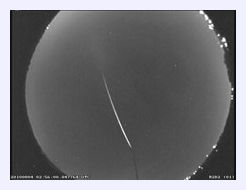
A
Perseid meteor, about 1 inch in diameter and moving at a speed of
134,000 mph, entered the atmosphere 70 miles above the town of Paint
Rock, Ala., on August 3 at 9:56 p.m.
On the night of
August 3 at 9:56 p.m. a Perseid meteor -- about 1 inch in diameter and
moving at a speed of 134,000 mph -- entered the atmosphere 70 miles
above the town of Paint Rock, Alabama. At such a tremendous velocity,
the meteor cut a path some 65 miles long, finally burning up 56 miles
above Macay Lake, just northeast of the town of Warrior. The meteor was
about six times brighter than the planet Venus and would be classified
as a fireball by meteor scientists.
The Perseid radiant was low in the sky when the meteor appeared --only
9.5 degrees elevation. Therefore, this meteor could be considered an
"Earth grazer" because of its long, shallow path, with an atmospheric
entry angle of only 12 degrees.
It's a very good start to this year's Perseid meteor shower,
which will peak on the night of Aug. 12-13 between midnight and dawn.
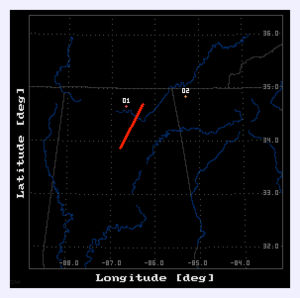
A map showing the path of a Perseid some 65 miles long from Paint Rock, Ala., to Macay Lake.
Andy Mannion
UK UFO Sightings
Sun, 08 Aug 2010 18:19 EDT
Posted: August 8, 2010
Location of Sighting: Petworth, West Sussex
Date of Sighting: 07th August 2010
Time: approx 10.30
Witness Statement: Putting rubbish in the
bins tonight I was startled by a broad streak of brilliant green light,
almost florescent or neon, which crossed the sky from the east behind me
towards the west. I have never seen anything like this before in my 54
years. If pressed, I would say it was an extremely long teardrop shape,
with a tail of the same colour behind it.
The object appeared to be curving downwards when it
disappeared, either over the horizon or into the intervening valley. The
local topography is quite up-and-down, being in the foothills of the
South Downs, so perspective was difficult. There was no sound, at the
time. Perhaps related or not, some ten minutes later there was an
inexplicable 'crashing/breaking/shattering' noise from the direction the
object had taken, but yet again it was impossible to pinpoint the
source. What must be borne in mind is that this is a quiet rural area,
where you can hear a fox sneeze a mile away!
Dr. Tony Phillips
Science@NASA
Sun, 08 Aug 2010 11:15 EDT

Looking
northeast around midnight on August 12th-13th. The red dot is the
Perseid radiant. Although Perseid meteors can appear in any part of the
sky, all of their tails will point back to the radiant.
You
know it's a good night when a beautiful alignment of planets is the
second best thing that's going to happen. Thursday, August 12th, is such
a night.
The show begins at sundown when Venus, Saturn, Mars and the crescent
Moon pop out of the western twilight in tight conjunction. All four
heavenly objects will fit within a circle about 10 degrees in diameter,
beaming together through the dusky colors of sunset. No telescope is
required to enjoy this naked-eye event: sky map.
The planets will hang together in the western sky until 10 pm or so.
When they leave, following the sun below the horizon, you should stay,
because that is when the Perseid meteor shower begins. From 10 pm until
dawn, meteors will flit across the starry sky in a display that's even
more exciting than a planetary get-together.
The Perseid meteor shower is caused by debris from Comet
Swift-Tuttle. Every 133 years the huge comet swings through the inner
solar system and leaves behind a trail of dust and gravel. When Earth
passes through the debris, specks of comet-stuff hit the atmosphere at
140,000 mph and disintegrate in flashes of light. These meteors are
called Perseids because they fly out of the constellation Perseus.
Swift-Tuttle's debris zone is so wide, Earth spends weeks inside it.
Indeed, we are in the outskirts now, and sky watchers are already
reporting a trickle of late-night Perseids. The trickle could turn into a
torrent between August 11th and 13th when Earth passes through the
heart of the debris trail.
2010 is a good year for Perseids because the Moon won't be up during the
midnight-to-dawn hours of greatest activity. Lunar glare can wipe out a
good meteor shower, but that won't be the case this time.
As Perseus rises and the night deepens, meteor rates will increase. For
sheer numbers, the best time to look is during the darkest hours before
dawn on Friday morning, Aug. 13th, when most observers will see dozens
of Perseids per hour.
5 magnitude and 9 sec train was captured by my camera in the night 5/6 August.
Best regards, Mikhail Maslov
Maurizio Eltri
Lunar Meteorite Hunters
Mon, 09 Aug 2010 20:55 EDT
Another fireball of the Perseids captured last night, 8th of August 2010 at 22:27:14, T.U., visual magnitude about -7.
Regards to all, Maurizio Eltri Venice, Italy.
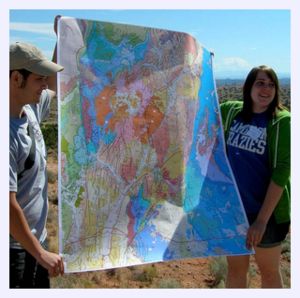
Allison Wetz and Martin Schmieder hold up a map that describes the complicated geology of the region near Santa Fe, New Mexico.
On
a winding road near Santa Fe, New Mexico, exposed mountain walls form
an intricate mosaic of brown, yellow, pink and grey rocks that stretch
up toward the deep blue sky. To the untrained eye, these rocks are just a
random jumble of different shapes and colors. To a geologist, however,
such rock outcrops can tell a compelling story about the distant past.
One particular outcrop on this Santa Fe mountain pass whispers a thrilling tale of ancient cataclysmic violence.
Evidence suggests that a large meteorite
smashed into this area long ago. The force of the impact shattered the
ground and tossed broken and pulverized rocks far and wide. [Earth's Meteor Craters]
Scientists are currently studying the Santa Fe impact structure to
determine when this event took place. Right now they can only say the
meteorite struck sometime between 1.2 billion and 330 million years ago.
Certainly it happened far enough in the past for the impact crater to
be completely altered or eroded.
Complicating the question is the "Great Unconformity", an event that
wiped about a billion years of history out of the geologic record of
this region. The disappearance of these tons of rocks was due to erosion
-- seas receded, and the newly exposed rocks wore away through wind,
rain and other weathering processes. Then the seas flooded in again and
sediments began forming new layers.
The result is that a 330-million-year-old rock layer now lies directly
on top of rocks that vary between 1.2 to 1.6 billion years old,
depending on the location.
Whenever the impact occurred, scientists estimate the crater it carved
out of the Earth was once between 6 to 13 kilometers in diameter. This
makes it much larger than a more famous impact crater in this region:
the 1.2 kilometer-wide Meteor Crater in Arizona.
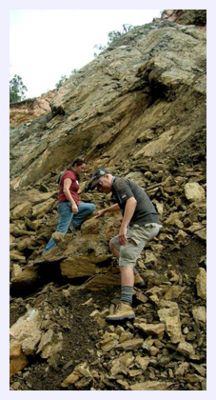
Kurt Klaus and Roberta Talache climb amid the uncertain footing of the Santa Fe meteorite impact structure.
This Preview is for a Select Audience
Most of the time, geologists study impact craters by digging a hole down
into the base of the crater floor. They cut out a cylinder of rock,
known as a "core," that is typically a few inches in diameter and
several feet long. The rock layers of a core can give scientists a
general idea of what the ground looks like deep beneath their feet.
Compared to the limited view of a core sample, the exposed rocks on the
Santa Fe mountain road are an enormous movie screen that projects a 3-D
feature of the aftermath of an impact.
"Such impact crater cross-sections are extremely rare in the world,"
says Horton Newsom of the University of New Mexico's Institute of
Meteoritics. Newsom and his colleagues, Shawn Wright and Wolf Elston,
recently organized a public field trip to investigate the Santa Fe
impact structure and the surrounding area. (Details on this and future
trips can be found here.)
Because of the lack of a classic crater, geologists might never have
known an impact occurred here if not for the fortuitous rock exposure.
The key pieces of evidence for impact are the numerous "shatter cones"
in what is thought to be the bedrock beneath the crater floor.
These cone-shaped rocks each have distinctive wavy patterns, as though
the rock itself briefly became a flowing liquid before re-solidifying.
Aside from underground nuclear explosions, shatter cones only form
through the instantaneous hypervelocity force of a meteorite impact.
In addition to the puzzle created by the "Great Unconformity," knowledge
about the history of impacts in the southwestern United States is
incomplete because the region has experienced a lot of volcanism over
the ages. Volcanoes tend to wipe away surface features like impact
craters, the fresh lava and tectonic activity obliterating evidence the
craters ever existed. One reason Meteor Crater is so well preserved is
because it is relatively young, having formed only about 50,000 years
ago.
Volcano versus Meteorite
Another problem with studying impact craters in volcanic regions is
figuring out if a crater was shaped by an extraterrestrial projectile,
or if instead it was formed by a violent volcanic eruption. Despite the
different methods of creation, the features can look remarkably
similar.
How can scientists tell the difference between one round hole in the
ground that was made by the inward punch of a meteorite, versus another
round hole made by the outward explosion of underground gas and lava?
The Jemez volcanic field near the Santa Fe impact structure provides a
conveniently close point of comparison. The field has a ring of several
dormant volcanic mountains that are now green with trees and other
vegetation.
Most of the volcanic activity here occurred between 1.6 million to 600
thousand years ago, with the last known eruption about 50 thousand years
ago (although another volcanic eruption could feasibly happen again
sometime in the future).
Besides looking for tell-tale shatter cones, scientists can compare
mixtures of broken rock, or "breccia", associated with the different
features.
One of the volcanoes, for instance, produced Battleship Rock ignimbrite,
a tall conglomeration of rubble that was once a hot cloud of particles
and gases thrown out by the eruption. The impact structure also has
large breccia mounds nearby. Differences in these rock towers can
indicate what process made them.
For instance, Battleship Rock has an enormous slab of black obsidian
glass that formed from cooling lava. Glasses also can form in the heat
of a meteorite impact, but they tend to be tiny round blobs less than a
centimeter in size. Such glass particles were found in a microscopic
analysis of the Santa Fe impact structure shatter cones.

Researcher Roberta Talache picks a shatter cone out of a rubble pile from the Santa Fe meteorite impact structure in New Mexico.
A History of Havoc
Volcanoes and impacts are Earth's twin modes of destruction. Both can
raise large tsunamis if they occur in or near an ocean. Both can alter
the environmental conditions of the surrounding area, and also have
global effects by sending huge amounts of pulverized rock and gas into
the sky that blocks sunlight and alters the chemistry of the planet's
atmosphere.
A large meteorite that slammed into the Yucatan Peninsula 65 million years ago is blamed for the K-T mass extinction
that ended the age of the dinosaurs. Volcanoes have not yet been linked
to a mass extinction, but they have famously caused more localized
catastrophes, such as when the eruption of Mount Vesuvius in 79 AD
killed most of the residents of Pompeii.
Discerning the subtle differences between a volcanic crater and an
impact crater is important for understanding Earth's complex history.
This knowledge also could be useful in our exploration of Mars. The
surface of Mars is liberally dotted with impact craters,
and the planet also has a history of volcanism; Olympus Mons, the
largest mountain in the solar system, is a dormant volcano. Mars even
may have volcanic activity taking place beneath its surface today.
Scientists studying the Santa Fe impact structure admit much more
analysis needs to be done before they fully understand what happened all
those years ago. They hope to better determine the size of the impact,
and also the various effects it had on the basement rocks that underlie
the missing crater.
"We need an army of scientists and graduate students studying this site,
over many, many years," notes Newsom. "It could take several lifetimes
to do all the necessary work."
With all the hoopla about the Moon having or not having water, let's
not forget our satellite's best-known features: its craters.
Although typically a sign of an ancient, unchanged landscape, a new
crater on the Moon reminds us that we still live in an intergalactic
shooting gallery.
The new crater was announced last week by the Lunar Science Institute
at NASA Ames. The impact occurred sometime between an image of the
region taken by the Apollo program in 1971 and an image recently taken
by the Lunar Reconnaissance Orbiter (LRO).
The LRO is a spacecraft that is taking large amounts of data on the
Moon's terrain and mineralogy, as well as taking those neat pictures of
the Apollo landers and astronaut footsteps.
The crater itself is ten meters across, suggesting to me that the
impactor was roughly a meter in size. Chunks of rock that size might hit
the Earth several times a year, causing a stir in the local media or
falling harmlessly and unnoticed. On the Moon however, it makes a bright
crater, spewing forth lighter colored rock over the dark basalt
surface.
Untouched by the powerful erosion processes as can be found on
Earth, that crater will be visible for millions, if not billions of
years to come, provided it doesn't get "erased" by another impactor.
By searching for more such craters, comparing archival photographs to
LRO's stunning images, lunar scientists can get a better handle on the
current impact rate in our neighborhood of the solar system. Not only
will that give us an idea of how many rocks are headed for Earth, but an
idea of what chances a future human base might have of running into
trouble.
The Moon is smaller than the Earth, and therefore has less of a
gravitational pull on incoming rocks. However, it lacks an atmosphere
that would burn up smaller impactors as is the case on Earth. I can see
it now, an astronaut gets bonked on the space helmet and turns around to
blame his or her colleague for playing around! So maybe it is best that
we know the impact rate as well as we can.
Technology Review, MIT
Tue, 10 Aug 2010 17:40 EDT
The discovery of a new crater in the Bayuda Desert in Sudan suggests
that the next generation of crater hunters could be amateurs based at
home.
Most
of the rocky planets, moons and asteroids in the Solar System are
pock-marked with impact craters of all sizes. On Earth, however, small
craters are rare because they quickly get eroded by weather and water.
So the discovery of new small craters is a reason to celebrate. A couple of weeks ago, an Italian team announced in the journal Science
that it had used Google Earth to identify an impact crater in the
remote desert of southern Egypt. A quick trip to the region showed this
crater to be 45 meters in diameter and reasonably well-preserved in the
desert rocks.
Now, just a few days later, Amelia Sparavigna at the Politecnico di
Torino in Italy has found evidence of another crater in the Bayuda
Desert in Sudan using Google Maps. This one is a little bigger: about 10
kilometres in diameter.
What's interesting about this discovery is the technology used to make
it. Sparavigna used Google Maps, an astronomical image-processing
program called AstroFracTool which she and a colleague developed, and an
open source image-processing package called GIMP.
All of this stuff is available for free on the web, making this kind of
discovery open to all. That means the next generation of crater hunters
could just as easily be amateurs working from home as professional
geologists working on location.
All of this stuff is available for free on the web, making this
kind of discovery open to all. That means the next generation of crater
hunters could just as easily be amateurs working from home as
professional geologists working on location.
How likely are these crater hunters to find anything? On other bodies in
the Solar System, small impact craters are more common by far than
large ones, a statistic that reflects the size distribution of rocks
floating round up there.
However, the size distribution of craters on Earth is the opposite. The
170 or so known craters here have diameters up to 300 km but fewer than
15 of these are smaller than 300 metres across. The reason is that most
small craters are quickly eroded away. However, those that have been
preserved are likely to be in desert regions. They remain undiscovered
because these areas have been poorly explored.
That suggests an opportunity. The recent successes of crater hunters in
these vast, largely unexplored desert regions suggests that there are
more to find out there for anybody with access to a computer and some
spare time on their hands.
Let the crater rush begin.
Reference
Crater-Like Landform In Bayuda Desert (A Processing Of Satellite Images)
Quaker City, Ohio -- An Ohio man claims he was hit in the shoulder by a chunk of meteorite falling from the sky Sunday night.
"I didn't know what it was," Pat Foraker said. "I thought somebody was playing a prank on me and threw something at me."
But Foraker said he doesn't believe the rock was thrown by his neighbor or anyone else in Quaker City.
"Hit me right here, I heard it," he said. "It was like a whistling
noise. It thumped my shoulder and landed in the swimming pool."
The rock sliced the skin on Foraker's shoulder, and was still warm when he plucked it out of the pool.
Geologists at Ohio State University will examine the rock, but believe it's likely a meteorite.
"It's kind of a 'strange things happen to strange people,' I guess," Foraker said.

The
Perseid meteor shower is sparked every August when the Earth passes
through a stream of space debris left by comet Swift-Tuttle
Star-gazers
witnessed the climax of one of the year's most spectacular meteor
showers last night as a new moon and cloud-free night in some areas
produced perfect conditions for seeing the Perseids.
The display of shooting stars is created by debris from the Swift-Tuttle comet burning up in the Earth's atmosphere.
While most of the meteors are no bigger than a grain of sand, they
create tremendous amounts of heat when they hit the atmosphere at
135,000 miles per hour (216,000 kph).
The northern hemisphere offers the best views of the annual event,
because of the tilt in the Earth's axis. Some of the meteors - named
after the Perseus constellation which provides their backdrop - are so
bright they can outshine the light-pollution in big cities, although
country-dwellers always get the best views.
Observers last night shared their sightings on Twitter, using
the hashtag "#meteorwatch" and these will be plotted on a map by the
British Astronomical Association and the Royal Astronomical Society.
More shooting stars are likely to be visible tonight.

The green arrow shows the asteroid. The other bright objects are stars in the Milky Way.
There
are places in space where the gravitational tug between a planet and
the Sun balance out, allowing other smaller bodies to remain stable.
These places are called Lagrangian points. So-called Trojan asteroids
have been found in some of these stable spots near Jupiter and Neptune.
Trojans share their planet's orbit and help astronomers understand how
the planets formed and how the solar system evolved. Now Scott Sheppard
at the Carnegie Institution's Department of Terrestrial Magnetism and
Chad Trujillo* have discovered the first Trojan asteroid, 2008 LC18, in a
difficult-to-detect stability region at Neptune, called the Lagrangian
L5 point.
They used the discovery to estimate the asteroid population there and
find that it is similar to the asteroid population at Neptune's L4
point. The research is published in the August 12, 2010, online issue of
Science Express.
Sheppard explained: "The L4 and L5 Neptune Trojan stability
regions lie about 60 degrees ahead of and behind the planet,
respectively. Unlike the other three Lagrangian points, these two areas
are particularly stable, so dust and other objects tend to collect
there. We found 3 of the 6 known Neptune Trojans in the L4 region in the
last several years, but L5 is very difficult to observe because the
line-of-sight of the region is near the bright center of our galaxy."
The scientists devised a unique observing strategy. Using images from
the digitized all-sky survey they identified places in the stability
regions where dust clouds in our galaxy blocked out the background
starlight from the galaxy's plane, providing an observational window to
the foreground asteroids.
They discovered the L5 Neptune Trojan using the 8.2-meter Japanese
Subaru telescope in Hawaii and determined its orbit with Carnegie's
6.5-meter Magellan telescopes at Las Campanas, Chile.
"We estimate that the new Neptune Trojan has a diameter of about 100
kilometers and that there are about 150 Neptune Trojans of similar size
at L5," Sheppard said.
"It matches the population estimates for the L4 Neptune stability
region. This makes the Neptune Trojans more numerous than those bodies
in the main asteroid belt between Mars and Jupiter. There are fewer
Neptune Trojans known simply because they are very faint since they are
so far from the Earth and Sun."
The L5 Trojan has an orbit that is very tilted to the plane of the solar
system, just like several in L4. This suggests they were captured into
these stable regions during the very early solar system when Neptune was
moving on a much different orbit than it is now.
Capture was either through a slow, smooth planetary migration process or
as the giant planets settled into their orbits, their gravitational
attraction could have caught and "frozen" asteroids into these spots.
The solar system was likely a much more chaotic place during that time
with many bodies stirred up onto unusual orbits.
The region of space surveyed also included a volume through which the
New Horizons spacecraft will pass after its encounter with Pluto in
2015.
Caitlin Stier
ScienceMag
Sat, 14 Aug 2010 09:00 EDT

Neptune's Trojan asteroids, which share the planet's orbit, may outnumber those in the solar system's main asteroid belt
An
asteroid that is trapped in a 'dead zone' behind Neptune has been found
for the first time. The finding suggests that the blue planet's rock
collection may outnumber objects in the main asteroid belt and may
provide clues to the origin of comets.
Objects can become trapped in two gravitational dead zones around
Neptune, where the forces of the sun and the planet balance out. In the
last decade, astronomers have identified six asteroids - called Trojans
- in the zone that moves in front of the planet along its orbit. But
finding Trojans in the region trailing the planet has proved more
difficult, because the faint light reflected off of objects there is
washed out by brighter starlight from the plane of the Milky Way.
Now, thanks to strategically located dust clouds, Scott
Sheppard at the Carnegie Institution of Washington and Chadwick Trujillo
at the Gemini Observatory in Hawaii have spied the first such trailing
Trojan.
Cloudy discovery
To find the asteroid - dubbed 2008 LC18 - Sheppard and Trujillo used
existing images of the sky to identify dark clouds of dust and gas in
our galaxy that fall along the path of the trailing Lagrangian point.
These clouds blotted out the light from background stars. They used the
Subaru Telescope on Mauna Kea, Hawaii, to spot the Trojan as it moved
across the sky.
The team estimates that 2008 LC18 is about 100 kilometres wide. Based on
the size of the region they studied, they suspect Neptune harbours as
many as 150 other Trojans of this size in the trailing Lagrangian
region. Together with the projected numbers in the planet's leading
Lagrangian zone, they suspect Neptune likely holds more asteroids of
this size than the solar system's main asteroid belt between Mars and
Jupiter.
Neptune's Trojans were probably captured billions of years ago, when
solar system bodies shifted positions in a period of planetary upheaval,
Sheppard says. Neptune, which may have been hurled outwards to twice
its original orbit in the migration, could have scooped up the rocky
bodies as it moved.
Trojan comets?
The Trojans could provide insights into the origin of comets. If Neptune boasts smaller Trojans, they could be a source of short-period comets,
which swing through the inner solar system every few hundred years.
Dislodged Trojans may account for the comets, whose origin is uncertain,
but more will need to be found before their numbers can actually
support this scenario.
Automated surveys that take frequent snapshots of the sky, such as the
upcoming Pan-STARRS project in Hawaii, will be particularly well-suited
to hunt for asteroids in Neptune's orbit.
"What these projects are all about is making a movie of the whole sky,
so they'll get anything that moves," says Eugene Chiang of the
University of California, Berkeley, who found the first Neptune Trojan.
"That's crucial for finding objects like Trojans."
Journal reference: Science (DOI:10.1126/science.1189666)
Vicki Terwilliger
Republican Herald
Tue, 17 Aug 2010 15:34 EDT
Hegins - Whatever struck Ralph Lucht's home in Hegins punched a hole through asphalt shingles and the flashing on the roof.
Lucht believes a meteorite may have struck his Pine Drive home at the end of July or beginning of August.
The metal of the white flashing is peeled outward several inches, as if it had suffered a tremendous force or heat.
A cable to a lighting rod on the roof was also severed by whatever
apparently fell from high above, Lucht said. It grazed the edge of the
cable, barely missed entering the house, then landed in a solid concrete
patio surrounding Lucht's pool.
The indentation in the concrete was about one-inch-by-one-inch wide and a
half-inch deep. Inside the hole was rust-colored flecks of material.
"The flecks were magnetized. It had to be a projectile," Lucht said. "I
looked around for parts, but didn't find any," he said of whatever had
made the depression in his patio.
The family did not hear anything, but recently noticed the damage when
they went outside. Lucht does not believe the damage could have been
caused by a stray bullet.
His home is in a mountainous region in a wooded area in Hegins Township
with no homes in close proximity. Hegins Township had no other recent
reports of similar damage, according to Supervisor Vicki Harman.
According to Mark Klein, a webmaster from the National Weather
Service, his agency does not track meteorites or meteor showers. Klein
referred any inquiries about meteorites to Space Weather.
This time of year is favorable for meteor showers.
The website states, "Earth's magnetic field is still reverberating from
(an) impact of August 3, which sparked auroras as far south as Wisconsin
and Iowa in the U.S."
Another resource, operated by the International Meteor Organization states the Perseids are seen at this time of year.
"The Perseids are one of the most exciting and dynamic meteor showers;
producing fast-moving shooting stars through July and August. Based on
IMO observations from recent years, we expect the 'normal peak' of
(about) 100 meteors per hour to occur in the night of August 12-13."
The IMO was founded in 1988 and has more than 250 amateur members
collecting accounts of meteor observations, according to the site.

Ralph
Lucht believes a meteorite may have caused the damage to his roof,
above, and rust-colored depression in the patio, below at his Pine Drive
home in Hegins.
Leon Springs -- A family out of Leon Springs had a strange experience Monday night.
It was 8:45pm when 10-year-old Benjamin Gardea says he stepped outside his house for a few minutes
"I was outside near the garden hose cleaning off some dirty shoes," Said Gardea.
And suddenly he heard a loud sound like an old lawn mower trying to
start. At first Gardea says he thought the electricity lines were
malfunctioning and sparks were flying out.
But then, "I looked up and I saw this fireball,
I was scared and at first I thought martians." Said Gardea as he stared at the sky.
Ben's mom, Marianna Gardea was inside the house when she says Gardea ran to her screaming for help.
"He walked in just pale as a ghost, and said mom something happened
outside, I don't know what it was," Said Marianna Gardea, "Finally a
meteor just came to our mind."
The family walked outside to check out what Gardea just witnessed.
Gardea said they looked for a while and finally found this piece of rock
where he believes the fireball touched the ground before his eyes.
"We got a hammer and a chisel and we knocked it out, we looked at it and It looked like a meteorite," Said Gardea.
KENS 5 took the rock to UTSA'S Dr. Eric Schlegel. He admitted that
finding a meteorite is extremely rare and his conclusion of the rock we
gave him, "I think it's a very standard rock that comes out of Texas,"
Said Schlegel.
Based on it's weight and shape, Dr. Schlegel says it could have easily been a rock and a piece of the asphalt.
"It's not heavy enough to be a meteorite, a meteorite for this size
would be closer to a pound and this is only an ounce or two," Said
Schlege.
But Schlegel says the fireball Gardea witnessed that night was very
real. He adds that it could have easily been a part of the Perseids
meteor shower.
Despite that outcome, Gardea says he'll hold on to the special sight, with a story to share for years to come.
"I'm going to put it in a glass case, a thing to pass on to generations," Said Gardea.
Cirebon: A meteor allegedly fell on an open area in Tersana Baru
Sugar Factory in Babakan, Cirebon, yesterday. The strange object gave
off a strong sulphuric stink and burned the grass, creating a one-meter
wide hole
A company staff, Dudi, explained that the employees first heard a thundering sound, following by a loud crash.
They were shocked to find a blue object melting on the field. "It even
formed the Arabic writing of the word God," he said. The melting stopped
and dried up like asphalt.
Because of the strong stench, the local people were curious and came to
the site and covered the area of the fall with sand. "It was to reduce
the smell," Dudi said.
Tersana Baru staff and the people took pictures of the strange
object with their cell phones. Some people even brought home small
chunks of the meteorite. The police later came and collected the chunks
for further investigation.
Iranian
meteor shower enthusiasts have particularly enjoyed the August show put
on by the Perseids, which was heralded by a brilliant fireball,
streaking across the eastern sky.
The Perseid meteor shower reached its peak last week and announced its
annual August arrival with a bright fireball over Iran's eastern cities.
Iranian astronomists say the fireball was caused by a meteor, as it struck Earth's atmosphere.
The fireball was observed by skywatching cameras operated by an Iranian space center, the Mehr News Agency reported.
This year's Perseid meteor shower peaked on the night of August 12-13 between midnight and dawn.
The fireball occurred low in the sky when it entered Earth's atmosphere above the eastern cities of Zahedan and Taftan.
Stargazers all over the world watch for the stunning display of
the Perseid meteor shower -- an annual event that occurs in mid-August
when Earth passes close to the orbit of the Swift-Tuttle comet.
The comet, which was discovered in 1862, and most recently observed in 1992, takes about 130 years to orbit the sun.
Space Weather
Sun, 22 Aug 2010 20:08 CDT
On August 20th at 18:22 UT, amateur astronomer Masayuki Tachikawa of
Kumamoto city, Japan, video-recorded an apparent impact on Jupiter.
This is the third time in only 13 months that amateur astronomers have
detected signs of impact on Jupiter. The earlier events occured on July
19, 2009, and June 3, 2010. This weekend's impact, if that's what it
was, has not been confirmed by multiple observers, but it resembles the
uncontroversial impact of June 3, 2010, and appears to be genuine.
"Like the event of June 3rd, this fireball did not produce any
visible debris," notes John Rogers, director of the British Astronomical
Association's Jupiter section. "Here are some hi-resolution images
taken 1-2 rotations before and 1-2 rotations after the event. As the
observers commented, there was no visible mark (not in RGB, nor UV, nor
methane), post-impact. Dark brown spots on the North Equatorial Belt
were already there before the fireball."
Many of us heard the loud rumble, and some were even lucky enough to
see something in the sky, but simply everyone is talking about the
supposed meteor that exploded over the Tombong area last Tuesday
afternoon.
A huge number of locals report having heard a loud unexplained
"thundering" noise on Tuesday at around 2pm, while others tell of seeing
a light falling through the sky at around the same time.
No one got quite as close as local Country Energy worker, David
Turnbull, however, who was at Craigie Range, preparing to climb a power
pole to make repairs.
David says it was a calm quiet day, when he suddenly noticed a light in
the sky, which started travelling straight towards him in an east to
west direction from Mount Wog.
He knew the bright object was travelling far too quickly to be an
aircraft, and he watched in astonishment for over 20 seconds as it flew
over the top of him, making a loud hissing or "swooshing" sound.
He said the initially bright object dulled and broke up into four or five pieces over Delegate, with a huge roar to be heard.
"Everything shook," he said. "I've never been in an earthquake, but it was that kind of a thing."
David laments the fact that he had no phone or camera to record the
event, and can't believe that no one else has reported seeing the object
so clearly.
Of course word spread quickly that a meteor had exploded within the local area, and the Bombala Times contacted the Sydney Observatory to try and confirm that this was indeed the case.
Astronomy Curator, Dr Nick Lomb was quick in his response,
confirming that two reports had been registered on the Sydney
Observatory 'Lights in the Sky' blog page that most likely related to
the occurrence.
The reports, from Moruya and from the Bermagui River, tell of sightings
of a daytime meteor between 1.50pm and 2pm on the Tuesday.
The first reads, "my wife and I were fishing in the Bermagui River and
we observed what appeared to be a meteorite travelling from south east
to northwest. We saw a ball followed by a very bright slender light. As
it descended at about 45 degrees, the tail sparkled like fireworks and
the object then became invisible".
The second, from Moruya, stated, "this afternoon saw what looked like a
comet? or shooting star? was really bright white/blue in colour, I saw
for approx 3 - 5 seconds then it split into 2 and disappeared. Was
very pretty, am guessing it was probably a meteor? Sky was very clear
and it was heading in a south - south westerly direction. just
wondering if anyone else saw the same thing?"
The Bombala Times asked Dr Lomb if he could confirm from these
reports, and our own, that the local rumours of a meteor exploding over
Tombong were correct.
"A meteor bright enough to be seen during the day may well be
sufficiently large to survive the journey through the atmosphere and
become a meteorite on the ground," Dr Lomb replied.
"However, unless it was seen to land we are unlikely to ever find out."
He encourages anyone who saw or heard anything on Tuesday afternoon to put in a report on the Lights in the Sky page.
"In that way a record is kept and if anyone finds a meteorite or a small
crater in the area in the future it may be possible to link it to this
event," he said.
The Bombala Times would also love to hear from anyone who has a
story to tell about the possible meteor on the Tuesday afternoon, with
those who saw the object encouraged to get in touch on with us on 6458
3666, as well as writing.
NASA is getting ready for its Dawn spacecraft's encounter with a
giant asteroid, set to happen in less than a year, the agency said.
Dawn will conduct a detailed study as it spends a year circling the
asteroid Vesta, becoming the first spacecraft to orbit a body in the
solar system's asteroid belt, SPACE.com reported Tuesday.
There have been previous missions to asteroids, but scientists say Vesta offers a chance for something special.
"Vesta is going to amaze us," Marc Rayman, Dawn's chief engineer at NASA's Jet Propulsion Laboratory, said.
At 350 miles across, Vesta is the second-largest body in the asteroid
belt, containing almost 10 percent of the entire belt's mass. Only the
asteroid Ceres, so large it is considered a dwarf planet, is a bigger
belt object than Vesta.
"It's a big, rocky, terrestrial-type body -- more likely similar to the
moon and Mercury than to the little chips of rocks we've flown by in the
past," Rayman said of Vesta.
Scientists expect Dawn's mission will help them understand how planets form.
Astronomers think Vesta was in the process of becoming a full-fledged
planet when Jupiter interrupted its growth as the gas giant's gravity
stirred up the material in the asteroid belt so objects there could no
longer come together and coalesce.
After a year orbiting Vesta, Dawn will move on to take a look at the
only asteroid considered even more interesting, the dwarf planet Ceres.
Howard Falcon-Lang
BBC News
Fri, 27 Aug 2010 11:00 CDT

The
dinosaurs were wiped out 65 million years ago by at least two meteorite
impacts, rather than a single strike, a new study suggests.
The
dinosaurs were wiped out 65 million years ago by at least two meteorite
impacts, rather than a single strike, a new study suggests.
Previously, scientists had identified a huge impact crater in the Gulf
of Mexico as the event that spelled doom for the dinosaurs.
Now evidence for a second impact in the Ukraine has been uncovered.
This raises the possibility that the Earth may have been bombarded by a whole shower of meteorites.
The new findings are published in the journal Geology by a team lead by Professor David Jolley of Aberdeen University.
When first proposed in 1980, the idea that a meteorite impact had killed
the dinosaurs proved hugely controversial. Later, the discovery of the
Chicxulub Crater in the Gulf of Mexico, US, was hailed as "the smoking
gun" that confirmed the theory.
Double trouble
The discovery of a second impact crater suggests that the dinosaurs were
driven to extinction by a "double whammy" rather than a single strike.
The Boltysh Crater in the Ukraine was first reported in 2002. However,
until now it was uncertain exactly how the timing of this event related
to the Chicxulub impact.
In the current study, scientists examined the "pollen and spores" of
fossil plants in the layers of mud that infilled the crater. They found
that immediately after the impact, ferns quickly colonized the
devastated landscape.
Ferns have an amazing ability to bounce back after catastrophe. Layers
full of fern spores - dubbed "fern spikes" - are considered to be a good
"markers" of past impact events.
However, there was an unexpected discovery in store for the scientists.
They located a second "fern spike" in a layer one metre above the first, suggesting another later impact event.
Professor Simon Kelley of the Open University, who was co-author on the
study, said "We interpret this second layer as the aftermath of the
Chicxulub impact".
This shows that the Boltysh and Chicxulub impacts did not happen at
exactly the same time. They struck several thousand years apart, the
length of time between the two "fern spikes".
Uncertain cause
Professor Kelley continued: "It is quite possible that in the future we will find evidence for more impact events".
Rather than being wiped out by a single hit, the researchers think that
dinosaurs may have fallen victim to a meteorite shower raining down over
thousands of years.
What might have caused this bombardment is highly uncertain.
Professor Monica Grady, a meteorite expert at the Open University who
was not involved in the current study, said "One possibility might be
the collision of Near Earth Objects".
Recently, NASA launched a program dubbed "Spaceguard". It aims to
monitor such Near Earth Objects as an early warning system of possible
future collisions.
A Bristol man has the local weather-world talking after spotting what looks like a meteor in broad daylight.
Gordon Busche got in touch with BBC Radio Bristol's The Afternoon Show
presenter, Peter Rowell, and sent in the image from his mobile phone.
Gordon said he was at Cabot Circus in Bristol at about 2.30pm on Tuesday when he spotted the shape in the sky.
He said: "We've just seen what looks like a meteor going across the sky from east to west.
"Very bright and fast, not sure if anyone else saw it."
BBC Bristol weatherman Richard Angwin said the image looks surprisingly good.
"There seems to be a really bright blob in the center of the image and a
really long trail to the right of the image," said Richard.
"This meteor cannot be tied directly to the recent Perseid Meteor Shower, which peaks around the 12th night of the month.
"Activity decreases but often continues until around the 24th
night. There are no other meteor showers of note in late August.
"Random meteors can occur at any time - this one was particularly
brilliant to be seen in broad daylight and it even seems to have left a
trail.
"Had it occurred at night it would surely have illuminated the whole sky."
Richard then went on to say that what happened to it as it continued its
westward flight is difficult to say - most meteors are simply dust
particles traveling at very high speeds.
He added: "Even if this was significantly larger, the odds are that it burnt up in the Earth's atmosphere.
"But it has been calculated that around 5,000 kilograms of extra-terrestrial material hits the Earth's surface every year.
"It is a very unusual [occurrence] but not unheard of - I'd like other viewers and listeners to say if they saw this too."
NASA
may appear to have its pick of thousands of known asteroids for a
manned mission, but only two are good targets within the next 20 years.
An asteroid mission
requires a large-enough destination that astronauts could reach within a
few months of launch from Earth, says Lindley Johnson, head of NASA's
Near-Earth Object program in Washington. Other limits to such an
ambitious undertaking include the viewing range of ground-based
telescopes.
"They don't come all that close all that often," Johnson said at a NASA workshop on NEOs three weeks ago.
While NASA admits more knowledge about objects that pass within 28
million miles (45 million km) of Earth could increase the number of
possible destinations, only two currently meet the guidelines set out by
the space agency in its attempt to send a manned mission to an asteroid by 2025, a goal set by President Barack Obama. One of the asteroids could be reached in 2020 and the other in 2025.
A third candidate would not be within range until 2045.
Experts attending the NASA workshop discussed how, where and when to
launch an asteroid-bound mission. Johnson later told SPACE.com, "In our
limited understanding of the smaller NEO population, we believe the
known catalog represents less than 5 percent of the projected total
population of accessible objects. So yes, improved NEO search assets
should find additional targets." [Photos of Asteroids]
Within human reach
NASA has not yet chosen any specific target for astronauts, Lindley
said. It has simply begun examining its options under certain human
spaceflight scenarios.
The earliest NASA could expect to reach an asteroid would be in 2020,
when ground-based telescopes are able to spot the return of a 197-foot
(60-meter) rock known as 2009 OS5.
Under one scenario, astronauts would launch on March 11, 2020. The space explorers might even fly aboard part of the International Space Station, a node that could be converted and detached, according to a theoretical proposal in a separate NASA presentation.
The round trip would take 170 days, which fits within NASA planners'
ideal guidelines of a spaceflight to and from the asteroid that lasts no
longer than 180 days. Another guideline is that the asteroids have a
size of at least 164 feet (50 meters).
The March 2020 launch would come just shortly before Earth-based
telescopes could survey the returning asteroid in April 2020. If NASA
missed that launch window, it could theoretically try again for the same
space rock in 2036, agency officials said.
A launch opportunity to visit a different asteroid would arise Sept. 19,
2025, with astronauts aiming for another 64-foot space rock, called
1999 AO10. But the viewing opportunity for Earth-based telescopes to
spot that target would come several months later, in January 2026.
A later effort could target the 328-foot (100-meter) object called 2003 SM84 in 2045.
Finding more rocks
The three possible candidates for the 2020-50 time-frame came from a
larger list of 44 known objects in orbits reachable by a human mission.
That assumes the future mission would have a rocket-launch capability similar to the heavy-lift Ares V rocket
being developed under the Constellation program, but which could be
canceled if President Barack Obama's proposal for NASA is approved by
Congress.
But just 17 of the objects reachable by humans are larger than 164 feet,
and only 15 are accessible within the next several decades. Of those
15, only three fit within the 180-day round-trip limit.
The list of possible targets reachable by humans could expand with
more-complete surveillance of NEOs. Experts agreed that NASA and its
international partners need to invest in more ground telescopes, or in a
possible space telescope that would roughly follow a Venus orbit.
Better monitoring of space rocks also could provide more information
about spin state, composition or possible neighboring objects. Even the
three possible targets reachable before 2050 remain largely unknown
besides orbit and rough size.
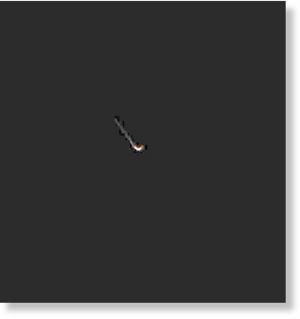
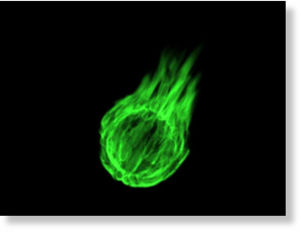


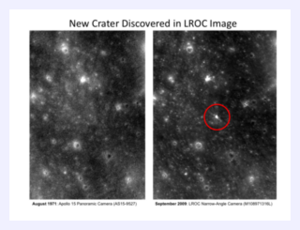
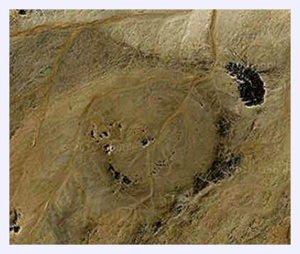

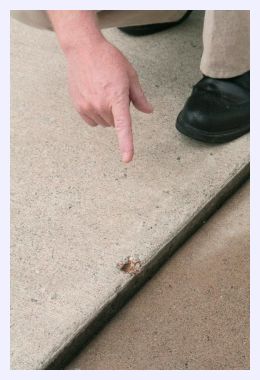
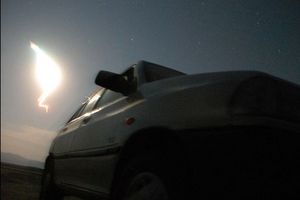

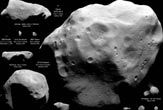
No comments:
Post a Comment